I want to do a suspended outdoor balcony off my masterbedroom which is on the second floor. Probably 4 feet out and 12-16 feet long. I would rather not have to put down 4X4’s or 6X6’s down to the ground to support the deck and I’m proposing that it will be cantilevered off the outside wall only 4′. I once lived in a home where the contractor accomplished just what I described by continuing the floor joints out further to suspend a deck. I know this is not correct because the joists were not treated and they ended up rotting way back into the home. Any previous FHB articles on proper techques to accomplish?
Discussion Forum
Discussion Forum
Up Next
Video Shorts
Featured Story
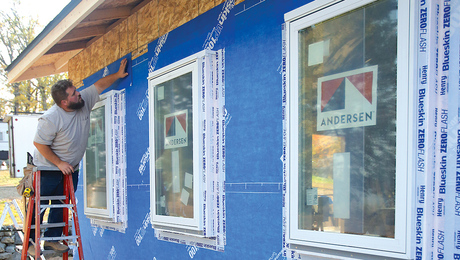
Getting the details right for a wall assembly with the control layers to the exterior and lots of drying potential.
Featured Video
How to Install Cable Rail Around Wood-Post CornersHighlights
"I have learned so much thanks to the searchable articles on the FHB website. I can confidently say that I expect to be a life-long subscriber." - M.K.
Fine Homebuilding Magazine
- Home Group
- Antique Trader
- Arts & Crafts Homes
- Bank Note Reporter
- Cabin Life
- Cuisine at Home
- Fine Gardening
- Fine Woodworking
- Green Building Advisor
- Garden Gate
- Horticulture
- Keep Craft Alive
- Log Home Living
- Military Trader/Vehicles
- Numismatic News
- Numismaster
- Old Cars Weekly
- Old House Journal
- Period Homes
- Popular Woodworking
- Script
- ShopNotes
- Sports Collectors Digest
- Threads
- Timber Home Living
- Traditional Building
- Woodsmith
- World Coin News
- Writer's Digest

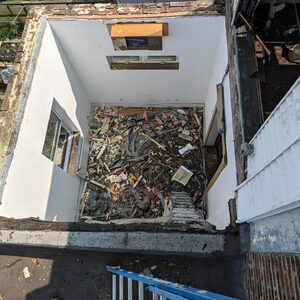
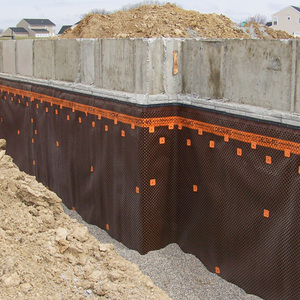
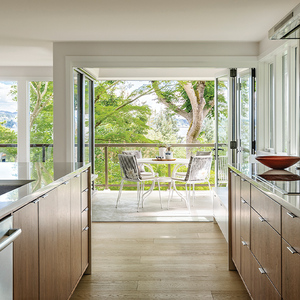
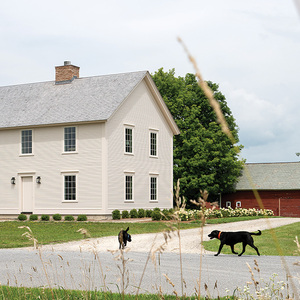













Replies
Is this a new house under construction or an addition to an existing home? Also, have you checked with your local building dept.? The discussion may be academic if they won't allow it without an engineers seal on the plans.
Excellence is its own reward!
Biff I agree with piffen ,.. is this old or new constuction ......new const. then 4' of balcony means at least 8' back into the existing floor joists (using treated lumber of course) and sealing against the weather... old means more demo and mess but can be done. but as Piffen says check with local building codes. just finished one on a new garage ...make sure you have at least twice the length in to support the balcony. good luck! Bill D. QWC
steel sounds like the way to go. i-beams, flitch plates would be sandwiched w/wood hence de-compisition,especially if you live in damp /wet climates. flitch as opposed to i-beam is about the same in labor . if you are familiar w/ the procedure. the cantilever formula that was polnted out previously is 1/3-2/3 meaning whatever you have projected out 4 foot, will have to be" inserted" 8 feet .this from my experiance. is the absolute minimum for outside cantilever's. you have to be careful with anything more than 3-4 feet cantilever's because of the deflection that takes place, outside will have the reverse on the inside, so you have to have double or even triple the joist's (parellel to the i-beam's)that will be sistered next to the i-beams, bolted to those components. and framing perpindicular to the steel i- beam's. IN SHORT GET SOME DRAWING'S WITH ENGINEER'S STAMP. to cover your butt. just my two cents.... bear
Biff
My father-in-law built an addition to his house about 25 years ago
with a canterlevered deck.
The wood rotted and now is unsafe.
I suggested he remove it perminently as the cost to fix is very high.
Go with posts.
Jeff
That's a tough one. If you bolt a treated 2x10 to regular 2x12 floor joists so many feet in and so many feet out, the moisture in the treated piece is still going to go into the untreated piece, forever! Even if you figure out a way to seal up around the penetration of the siding, it's going to be impossible to stop internal moisture in that wood from being a problem. Even with steel you're going to get condensation making your wood inside wet.
Maybe you're in luck and the joists inside go the wrong direction and you won't try this.
If you can't stand it, though, and have to have that view, consider making it an enclosed space with a roof and walls covering your cantilevered joists. I would find some discounted or surplus windows and doors and design around those. Maybe use sliders or French doors that open in with wrought iron railings mounted outside for a deck-like feel. You were going to have to get a door to go out on the balcony anyway. The added cost of the roof and walls will be worth it in decreased maintenance down the road.
Good luck!
B
Along with all the other advice, structural corbels are helpful.
EliphIno!
Thanks a bunch for info, this is a remodel, home was built in 1966 and from the masterbedroom there is a killer view. The original blueprints called for two small french doors opening up to a suspended balcony overlooking the view. The original builder eliminated it to save costs, Darn! It sounds like I could be opening up a huge can of worms by doing it the suspended way, cutting into the second story rim joist and sistering onto the original floor joists 8 feet in for a 4 foot balcony doesn't sound like an easy task at all! The post supported deck method would definitely be easier but it would hurt the "feel" of the patio below. Well it was a good thought anyway, thanks again, Biff
what about sky hooks??
Sky Hooks?????
Could you support the deck via steel cables above? (Maybe that's what a sky-hook is?)
yeah they sell them at builders merchants who also stock board lentheners and other such items.
the hooks attach to want ever you want to hold up and attach to the sky!!!!!!!
aleks
I'm just about to start a project with the same thing. Here's what the engineer spec'd. I'm not one to be able to say whether it's overkill or not; most engineers are strong believers in the CYA principle ...
The third floor (balcony level) will have 14" I-joists for the floor deck. In the area of the balcony, 14" LVL's will be sistered to the joists, extending 6' out from the exterior, and 12' back into the structure, for a width of 18'. Th outermost ends will be 11-7/8" deep, and will taper back up 1/4" to the foot toward the house. Because there is no roof overhang here (parapet walls), and the balcony will have a membrane surface, this will ensure that there is a small step from the room down to the balcony deck, so rain can't we wind-driven under the door.
So essentially the 11-7/8" is sufficient for the structure. If you're going to have a conventional deck w/ gaps for drainage, your interior floor deck and LVL extensions could all be 11-7/8", and flat. My personal opinion, though, and I'm not an engineer.
Formerly BEMW at The High Desert Group LLC
Edited 5/19/2003 4:25:49 PM ET by Bruce
Thanks for your input Bruce, my project sounds very similar to yours. I don't think I can use 14" I's. My balcony is going between the first and second floor so I think they are 2X10's. If I taper the slope away with 2X10's all end up with a 8 1/4" approx. at the ends, for a four foot balcony. My big concern is keeping the sistered joists from rotting and the original joists from absorbing moisture and decaying. Did your engineer spec that procedure?? Thanks, Biff
As I said, I'm using a waterproof membrane over 3/4" ply, so I plan to see that the joists stay dry. I'll probably saturate the end cuts w/ epoxy just for giggles.
If you're going w/ open decking, you have no need for a taper; I also would be a bit uncomfortable tapering down to 8". Probably not a serious concern, but could get a bit springy.
Formerly BEMW at The High Desert Group LLC
Edited 5/19/2003 4:28:19 PM ET by Bruce
biff... i don't like cantilevers.. they're usually not correctly engineered.
under our code, the deck has to be designed for 60/lb/sf..
here's a pic. of a 5' x 8' dust porch supported by 4x6 bracketsMike Smith Rhode Island : Design / Build / Repair / Restore
Hey Mike,
Not trying to push yer buttons because I respect your fine work, but that picture to me makes the porch look like it's falling down, or at least sagging quite a bit?
Dog
dawg.. i noticed that when i posted it... but i posted it anyway in the interests of honesty.. now , i'll have to go put a level on it to see what's what..either it's out of level or the lens is bending it
that was built around '85..here's 2 more viewsMike Smith Rhode Island : Design / Build / Repair / Restore
Mike,
Looks fine in those pics. Looks like those supports are attached right over (cedar?) the siding--any problems with that setup as far as caulking, etc. and cracking siding? Are they through bolted or lagged?
I've thought about doing this sort of thing a couple times but backed off because of issues like that.
MD
the vertical supports are directly attached to the sheathing with posts framed into the walls to support them..
the verticals are rabbeted so the clapboards run behind them.... anyways , there is no slop..so i'll put a level on and let you knowMike Smith Rhode Island : Design / Build / Repair / Restore
Cool idea with the rabbets. Looks great, and no worries.
That first picture has spherical abberation, notice that the whole horizontal line of the eaves appears to be slightly curved, with more curvature closer to the ends. We see that same problem all the time shooting ground glass alignment charts, even on the big expensive Panavision zooms.
-- J.S.
john , i thot the same.. but the real problem is the balconey is a half octagon... so the corners are clipped... all of the courses are level but the corner runs away from the lens....so the combination of the spherical .. and the clipped corners.. makes it appear out of level..
Mike Smith Rhode Island : Design / Build / Repair / Restore
Sure it does<G> So what's with folks in Rhoad Ideland building porches for their dust? We just farm it under the bed, here! EliphIno!
billy... we thot it was a balconey, 'til my aunt from Michigan came to visit..." my , what a cute dust porch !".... kinda stuck..
i guess that's where they dusted the carpets and bedding ....Mike Smith Rhode Island : Design / Build / Repair / Restore
Maybe it's where Elmore James dusted his broom! EliphIno!
Just a note I wanted to stick in here -
LVLs (and I-joists) aren't designed for exterior applications. They have to be protected from the weather.
Sounds like you maybe have them covered. But I wanted to mention it in case there were others who might not know that.The forest would be silent if the only birds who sang were the ones who sang the best.
Yeah, good point to point that out. I wouldn't be using them without the deck membrane. I'm anal enough that I'll probably smear the LVL's with something waterproof during construction, until I get the deck and membrane down.Formerly BEMW at The High Desert Group LLC
Build the deck just like a attic space. Roof covering on top, water shedding sides, closed bottom, and ventilation.
No need for treated lumber.
Since you need a railing, make the railing part of the structural support.
Since your joists will be oversized (for appearance reasons) your span into the house can be much less.
I don't want to go with a roof, thanks for the suggestion anyway!